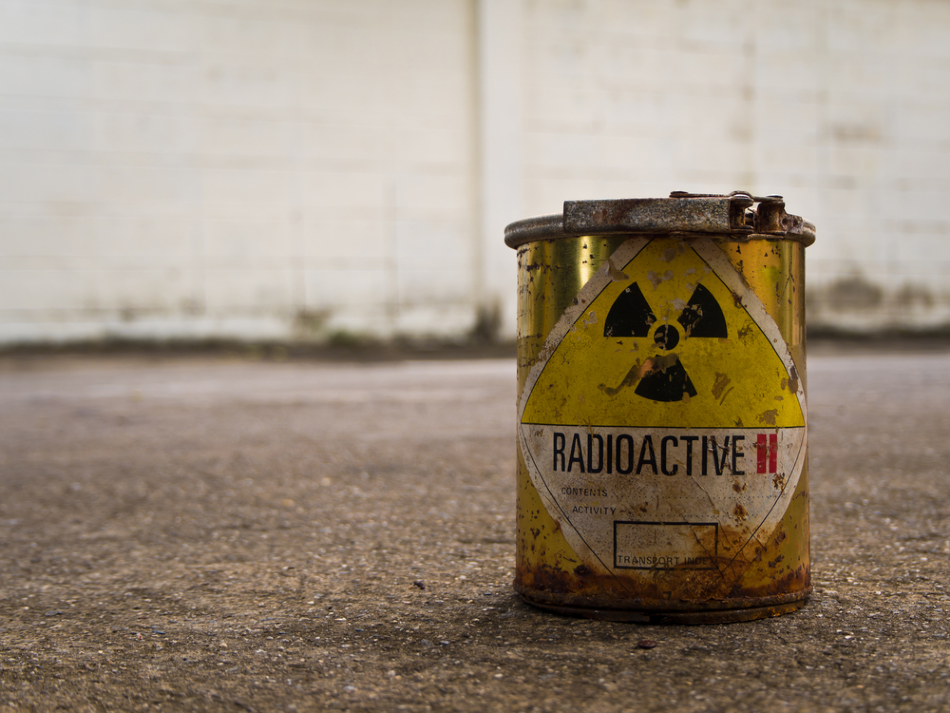
Image Credit: Satakorn/Shutterstock.com
Nuclear energy accounts for one-tenth of global electricity generation. When turning nuclear fuel into electricity, waste product is generated in several forms with low, but potentially environmentally damaging levels of radioactivity. Low-level liquid radioactive waste (LLW) is one form of harmful waste.
Researchers from Brazil’s Nuclear Engineering Institute recently became the first to attempt to apply graphene quantum dots (GQDs) to the treatment of LLW. Results were highly encouraging and indicated that GQDs can be a useful tool to help manage a significant contributor to radioactive industry waste.
What are Quantum Dots?
Quantum dots (QDs) are nanotechnology that features semiconductor particles or crystals between 2-10 nm (between 10 and 50 atoms). They have uncommon high surface-to-volume ratios, which gives QDs unique quantum, electronic and optical properties suitable for a range of applications in new technologies.
Due to their size and the associated quantum phenomena of crystals at this size, quantum dots can produce high energy and high intensity emitted light. The smaller the quantum dot, the higher the energy and intensity of the light. This makes them useful for LEDs and solid-state lighting, displays and photovoltaics.
What are Quantum Dots?
Video Credit: NIBIB gov/YouTube.com
In electronics, the nano-size of QDs means they can be packed into transistors, solar cells, and quantum computing chips with greater density. QDs are also used in the biomedical sciences as they are small enough to target the micro-cellular level, and display superior fluorescent properties to traditional biosensors.
An exciting new category of QDs is carbon-based. Not only are these less toxic than many other material QDs, but they can also leverage their naturally high surface-to-area ratios and adsorptive qualities to help treat a variety of types of waste.
The Properties and Applications of Quantum Dots
The Nuclear Fuel Cycle and Liquid Radioactive Waste
The most common raw material used for nuclear fuel is enriched uranium ore. The isotope Uranium-238 is the most common naturally occurring uranium specie, and one of the most abundant nuclei found in nature overall. It has a half-life of 4.5 billion years, and is chemically classed as an actinide or radionuclide. This class of nuclei has particularly complex chemical properties, which have a direct effect on the solid-phase formation and adsorption properties.
In aiming to mitigate the damaging effects of radioactive waste in general, nuclear plants incorporate methods for long-term storage and disposal. For LLW, this is achieved using chemical precipitation, which creates a stable solid form with reduced volume from the liquid waste. This solid product is easier to manage and store, reducing its impact on the environment.
The Study
Graphene has already been widely tested to treat a variety of heavy metal and organic pollutants. The structure of graphene (an sp2-hybridized single-atom layer, often in a honeycomb formation) gives the material a vast surface area and a high adsorption capacity, making it useful in this regard.
The Brazilian research team developed and tested GQDs between 160-220 nm using a green, low-solvent method of production.
The team applied varying concentrations of GQDs to three 10 mL samples of LLW (specifically, alamine-336 impregnated with uranium-238). The samples were each stirred for 24 hours at 300 rpm, then centrifuged for 30 minutes at 20,000 rpm. They were then recovered and dried out for six hours. After drying, the researchers measured the radioactivity of each sample.
In the final results, the researchers were able to recover most of the uranium-238 from the solution. The GQDs were able to adsorb almost 40% of the uranium-238. All samples showed a significant decrease in radioactivity levels.
There was no direct relationship between the concentration of GQDs used in the sample and the final recovery of uranium-238.
Approximately 90% of the 10 mL LLW sample had been reduced for no more than 1 g of dried solid (the combination of uranium-238 and the GQDs). For the researchers, this showed that GQDs can be used effectively to reduce the volume of LLW, and, therefore, improve ease of disposal.
References and Further Reading
de Menezes, F.D., Alencar, L.M.R., dos Santos, C.C. et al. Using graphene quantum dots for treating radioactive liquid waste. Environ Sci Pollut Res 27, 3508–3512 (2020). https://doi.org/10.1007/s11356-019-07155-x
Preeti Nigam Joshi, Subir Kundu, Sunil K. Sanghi and Dhiman Sarkar (February 10th 2016). Graphene Quantum Dots - From Emergence to Nanotheranostic Applications, Smart Drug Delivery System, Ali Demir Sezer, IntechOpen, DOI: 10.5772/61932. Available from: https://www.intechopen.com/books/smart-drug-delivery-system/graphene-quantum-dots-from-emergence-to-nanotheranostic-applications
Steep decline in nuclear power would threaten energy security and climate goals. [Online] International Energy Agency (2019). Available at: https://www.iea.org/news/steep-decline-in-nuclear-power-would-threaten-energy-security-and-climate-goals (Accessed 31 March 2020).
Mollah, A.S., Begum, A. & Rahman, M.M. Removal of radionuclides from low level radioactive liquid waste by precipitation. J Radioanal Nucl Chem 229, 187–189 (1998). https://doi.org/10.1007/BF02389473
Quantum Dots. [Online] Merck Group. Available at: https://www.sigmaaldrich.com/technical-documents/articles/materials-science/nanomaterials/quantum-dots.html (Accessed 31 March 2020).
Disclaimer: The views expressed here are those of the author expressed in their private capacity and do not necessarily represent the views of AZoM.com Limited T/A AZoNetwork the owner and operator of this website. This disclaimer forms part of the Terms and conditions of use of this website.